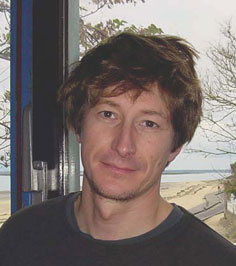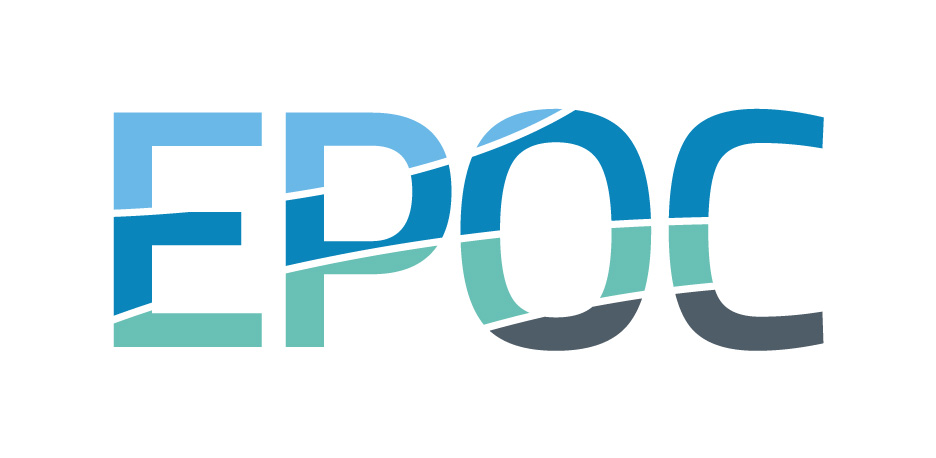|
|
Damien TRAN | Nom : | Tran |  | | Prénom : | Damien | | Statut : | Chercheur CNRS (Chargé de Recherche 1ère classe HDR) | | Equipe : | Ecotoxicologie Aquatique
| | Adresse : | UMR CNRS 5805 EPOC - OASU
Station Marine d'Arcachon
Université de Bordeaux
Place du Docteur Bertrand Peyneau
33120 ARCACHON CEDEX
FRANCE | | Téléphone(s) : | 05 56 22 39 37
| | E-mail : | damien.tran@u-bordeaux.fr
|
Expertise / Responsabilité
chronobiologie, écophysiologie, écotoxicologie , algues toxiques
Activités
Impact des algues toxiques chez les animaux filtreurs. Approches écoéthologique, écophysiologique et écotoxicologique.
|
Publications
Bringer A., Thomas H., Dubillot E., Le Floch S., Receveur J., Cachot J., Tran D. (2021) Subchronic exposure to high-density polyethylene microplastics alone or in combination with chlortoluron significantly affected valve activity and daily growth of the Pacific oyster, Crassostrea gigas, Aquatic Toxicology, 237, doi: 10.1016/j.aquatox.2021.105880.
Belamy T., Legeay A., Etcheverria B., Cordier M.A., Gourves P.Y., Baudrimont M. (2020) Acute toxicity of sodium chloride, nitrates, ortho-phosphates, cadmium, arsenic and aluminum for juveniles of the freshwater pearl mussel: Margaritifera margaritifera (Linnaeus 1758), Environments, 7, doi: 10.3390/environments7060048.
Last K.S., Hafker N.S., Hendrick V.J., Meyer B., Tran D., Piccolin F. (2020) Biological clocks and rhythms in polar organisms, In: Berge J., Johnsen G., Cohen J. (eds) POLAR NIGHT Marine Ecology. Advances in Polar Ecology, vol 4. Springer, 217-240, doi: 10.1007/978-3-030-33208-2_8.
Perrigault M., Andrade H., Bellec L., Ballantine C., Camus L., Tran D. (2020) Rhythms during the polar night: evidence of clock-gene oscillations in the Arctic scallop Chlamys islandica, Proceedings of the Royal Society B: Biological Sciences, 287 (1933), doi: 10.1098/rspb.2020.1001.
Tran D., Andrade H., Durier G., Ciret P., Leopold P., Sow M., Ballantine C., Camus L., Berge J., Perrigault M. (2020) Growth and behaviour of blue mussels, a re-emerging polar resident, follow a strong annual rhythm shaped by the extreme high Arctic light regime, Royal Society Open Science, 7(10), 200889, doi: 10.1098/rsos.200889.
Tran D., Perrigault M., Ciret P., Payton L. (2020) Bivalve mollusc circadian clock genes can run at tidal frequency, Proceedings of the Royal Society B: Biological Sciences, 287(1918), doi: 10.1098/rspb.2019.2440.
Payton L., Tran D. (2019) Moonlight cycles synchronize oyster behavior, Biology Letters, doi: 10.1098/rsbl.2018.0299.
Castrec J., Soudant P., Payton L., Tran D., Miner P., Lambert C., Le Goic N., Huvet A., Quillien V., Boullot F., Amzil Z., Hegaret H., Fabioux C. (2018) Bioactive extracellular compounds produced by the dinoflagellate Alexandrium minutum are highly detrimental for oysters, Aquatic Toxicology, 199, 188-198, doi: 10.1016/j.aquatox.2018.03.034.
Mat A., Klopp C., Payton L., Jeziorski C., Chalopin M., Amzil Z., Tran D., Wikfors G., Hegaret H., Soudant P., Huvet A., Fabioux C. (2018) Oyster transcriptome response to Alexandrium exposure is related to saxitoxin load and characterized by disrupted digestion, energy balance, and calcium and sodium signaling, Aquatic Toxicology, 199, 127-137, doi: 10.1016/j.aquatox.2018.03.030.
Ahmed H., Ushirobira R., Efimov D., Tran D., Sow M., Ciret P., Massabuau J.C. (2017) Monitoring biological rhythms through the dynamic model identification of an oyster population, IEEE Transactions on Systems, Man, and Cybernetics: Systems, 47, 939-949, doi: 10.1109/TSMC.2016.2523923.
Boullot F., Castrec J., Bidault A., Dantas N., Payton L., Perrigault M., Tran D., Amzil Z., Boudry P., Soudant P., Hegaret H., Fabioux C. (2017) Molecular characterization of voltage-gated sodium channels and their relations with paralytic shellfish toxin bioaccumulation in the pacific oyster Crassostrea gigas, Marine Drugs, 15, 21, doi: 10.3390/md15010021.
Payton L., Perrigault M., Hoede C., Massabuau J.C., Sow M., Huvet A., Boullot F., Fabioux C., Hegaret H., Tran D. (2017) Remodeling of the cycling transcriptome of the oyster Crassostrea gigas by the harmful algae Alexandrium minutum, Scientific Reports, 7, 3480, doi: 10.1038/s41598-017-03797-4..
Payton L., Perrigault M., Marcel A., Bourdineaud J.P., Massabuau J.C., Tran D. (2017) Trojan horse strategy for non-invasive interference of clock gene in the oyster Crassostrea gigas, Marine Biotechnology, 19, 361-371, doi: 10.1007/s10126-017-9761-9.
Payton L., Sow M., Massabuau J.C., Ciret P., Tran D. (2017) How annual course of photoperiod shapes seasonal behavior of diploid and triploid oysters, Crassostrea gigas, PLoS ONE, 12, doi: 10.1371/journal.pone.0185918.
Perrigault M., Tran D. (2017) Identification of the molecular clockwork of the oyster Crassostrea gigas, PLoS ONE, 12, no.e0169790, doi: 10.1371/journal.pone.0169790.
Ahmed H., Ushirobira R., Efimov D., Tran D., Sow M., Payton L., Massabuau J.C. (2016) A fault detection method for automatic detection of spawning in oysters, IEEE Transactions on Control Systems Technology, 24, 1140-1147, doi: 10.1109/TCST.2015.2472999.
Andrade H., Massabuau J.C., Cochrane S., Tran D., Ciret P., Sow M., Camus L. (2016) High frequency non-invasive (HFNI) bio-sensors as a potential tool for marine monitoring and assessments, Frontiers in Marine Science, 3, 187, doi: 10.3389/fmars.2016.00187.
Bernard I., Massabuau J.C., Ciret P., Sow M., Sottolichio A., Pouvreau S., Tran D. (2016) In situ spawning in a marine broadcast spawner, the Pacific oyster Crassostrea gigas: Timing and environmental triggers, Limnology and Oceanography, 61, 635-647, doi: 10.1002/lno.10240.
Tran D., Sow M., Camus L., Ciret P., Berge J., Massabuau J.C. (2016) In the darkness of the polar night, scallops keep on a steady rhythm, Scientific Reports, 6, doi: 10.1038/srep32435.
Ahmed H., Ushirobira R., Efimov D., Tran D., Massabuau J.C. (2015) Velocity estimation of valve movement in oysters for water quality surveillance, IFAC - PapersOnLine, 48(11), 333-338, doi: 10.1016/j.ifacol.2015.09.207.
Ahmed H., Ushirobira R., Efimov D., Tran D., Sow M., Massabuau J.C. (2015) Automatic spawning detection in oysters: a fault detection approach, Proc. European Control Conference (ECC), 1540-1545, doi: 10.1109/ECC.2015.7330757.
Berge J., Daase M., Renaud P.E., Ambrose W.G., Darnis G., Last K.S., Leu E., Cohen J.H., Johnsen G., Moline M.A., Cottier F., Varpe O., Shunatova N., Balazy P., Morata N., Massabuau J.C., Falk-Petersen S., Kosobokova K., Hoppe C.J.M., Weslawski J.M., Kuklinski P., Legezynska, J., Nikishina D., Cusa M., Kedra M., Wlodarska-Kowalczuk M., Vogedes D., Camus L., Tran D., Michaud E., Gabrielsen T.M., Granovitch A., Gonchar A., Krapp R., Callesen T.A. (2015) Unexpected levels of biological activity during the polar night offer new perspectives on a warming Arctic, Current Biology, 25, 2555-2561, doi: 10.1016/j.cub.2015.08.024..
Tran D., Ciutat A., Mat A., Massabuau J.C., Hegaret H., Lambert C., Le Goic N., Soudant P. (2015) The toxic dinoflagellate Alexandrium minutum disrupts daily rhythmic activities at gene transcription, physiological and behavioral levels in the oyster Crassostrea gigas, Aquatic Toxicology, 158, 41-49, doi: 10.1016/j.aquatox.2014.10.023.
Ahmed H., Ushirobira R., Efimov D., Tran D., Massabuau J.C. (2014) Dynamical model identification of population of oysters for water quality monitoring. , Proc. European Control Conference (ECC), 152-157, doi: 10.1109/ECC.2014.6862479.
Dedeh A., Ciutat A. , Tran D. , Bourdineaud J.P. (2014) DNA alterations triggered by environmentally relevant polymetallic concentrations in marine Clams Ruditapes philippinarum and polychaete worms Hediste diversicolor , Archives of Environmental Contamination and Toxicology, 67, 651-658, doi: 10.1007/s00244-014-0059-x.
Mat A.M., Massabuau J.C., Ciret P., Tran D. (2014) Looking for clock mechanisms responsible for the circatidal behaviour in the oyster Crassostrea gigas, Marine Biology, 161, 89-99, doi: 10.1007/s00227-013-2317-2.
Mat A.M., Haberkorn H., Bourdineaud J.P., Massabuau J.C., Tran D. (2013) Genetic and genotoxic impacts in the oyster Crassostrea gigas exposed to the harmful alga Alexandrium minutum, Aquatic Toxicology, 140-141, 458-465.
Mat A.M., Massabuau J.C., Ciret P., Tran D. (2012) Evidence for a plastic dual circadian rhythm in the oyster Crassostrea gigas, Chronobiology International, 29, 857-867.
Haberkorn H., Tran D., Massabuau J.C., Ciret P., Savar V., Soudant P. (2011) Relationship between valve activity, microalgae concentration in the water and toxin accumulation in the digestive gland of the Pacific oyster Crassostrea gigas exposed to Alexandrium minutum, Marine Pollution Bulletin, 62, 1191-1197.
Schmitt F.G., De Rosa M., Durrieu G., Sow M., Tran D., Ciret P., Massabuau J.C. (2011) Statistical study of bivalve high frequency microclosing behavior: scaling properties and shot noise analysis, International Journal of Bifurcation and Chaos, 21, 3565-2576.
Tran D., Nadau A., Durrieu G., Ciret P., Parisot J.C., Massabuau J.C. (2011) Field chronobiology in a molluscan bivalve: how the moon and sun cycles interact to drive oyster activity rhythms, Chronobiology International, 28, 307-317.
Tran D., Haberkorn H., Soudant P., Ciret P., Massabuau J.C. (2010) Behavioral responses of Crassostrea gigas exposed to the harmful algae Alexandrium minutum, Aquaculture, 298, 338-345.
Tran D., Massabuau J.C., Vercelli C. (2008) Influence of sex and spawning status on oxygen consumption and blood oxygenation status in oysters Crassostrea gigas cultured in a Mediterranean lagoon (Thau, France), Aquaculture, 277, 58-65.
Tran D., Massabuau J.C., Garnier-Laplace J. (2008) Impact of hypoxia on hemolymph contamination by uranium in an aquatic animal, the freshwater clam Corbicula fluminea, Environmental Pollution, 156(3), 821-826.
Tran D., Fournier E., Durrieu G., Massabuau J.C. (2007) Inorganic mercury detection by valve closure response in the freshwater clam Corbicula fluminea: integration of time and water metal concentration changes, Environmental Toxicology and Chemistry, 26.
Tran D., Moody J., Fisher A., Foulkes M., Jha A. (2007) Protective effects of selenium on mercury-induced DNA damage in mussel haemocytes, Aquatic Toxicology, 84, 11-12..
Durrieu J., Mojtahid M., Cazes L., Galgani F., Jorissen F., Tran D., Camps R. (2006) Aged drilled cuttings offshore Gabon: New methodology for assessing their impact, SPE International, 1, 170-177.
Tran D., Bourdineaud J.P., Massabuau J.C., Garnier-Laplace J. (2005) Modulation of uranium bioaccumulation by hypoxia in the freshwater clam Corbicula fluminea: Induction of multixenobiotic resistance protein and heat shock protein 60 in gill tissues , Environmental Toxicology and Chemistry, 24 (9), 2278-2284.
Fournier E., Tran D., Denison F., Massabuau J.C., Garnier-Laplace J. (2004) Valve closure response to uranium exposure for a freshwater bivalve Corbicula fluminea : quantification of the influence of pH, Environmental Toxicology and Chemistry, 24, 1108-1114.
Tran D., Fournier E., Durrieu G., Massabuau J.C. (2004) Copper detection in the Asiatic clam Corbicula fluminea: optimum valve closure response, Aquatic Toxicology, 66, 333-343.
Tran D., Massabuau J.C., Garnier-Laplace J. (2004) Effect of CO2 on uranium bioaccumulation in the freshwater clam Corbicula fluminea, Environmental Toxicology and Chemistry, 23, 739-747.
Massabuau J.C., Tran D. (2003) Ventilation, a recently described step limiting heavy metal contamination in aquatic animals, Journal de Physique IV, 107, 839-843.
Tran D., Ciret P., Ciutat A., Durrieu G., Massabuau J.C. (2003) Potential and limits of bivalve closure response to detect contaminants : a new approach applied to cadmium, Environmental Toxicology and Chemistry, 22, 914-920.
Tran D., Boudou A., Massabuau J.C. (2002) Relationship between feeding induced ventilatory activity and bioaccumulation rate of cadmium in the Asiatic clam Corbicula fluminea at 15 and 25°C, Environmental Toxicology and Chemistry, 21, 327-333.
Tran D., Boudou A., Massabuau J.C. (2001) How water oxygenation level influences cadmium accumulation pattern in the Asiatic clam Corbicula fluminea : a laboratory and field study, Environmental Toxicology and Chemistry, 20, 2073-2080.
Tran D., Boudou A., Massabuau J.C. (2000) Mechanism of oxygen consumption maintenance under varying levels of oxygenation in the freshwater clam Corbicula fluminea, Canadian Journal of Zoology, 78, 2027-2036.
|

